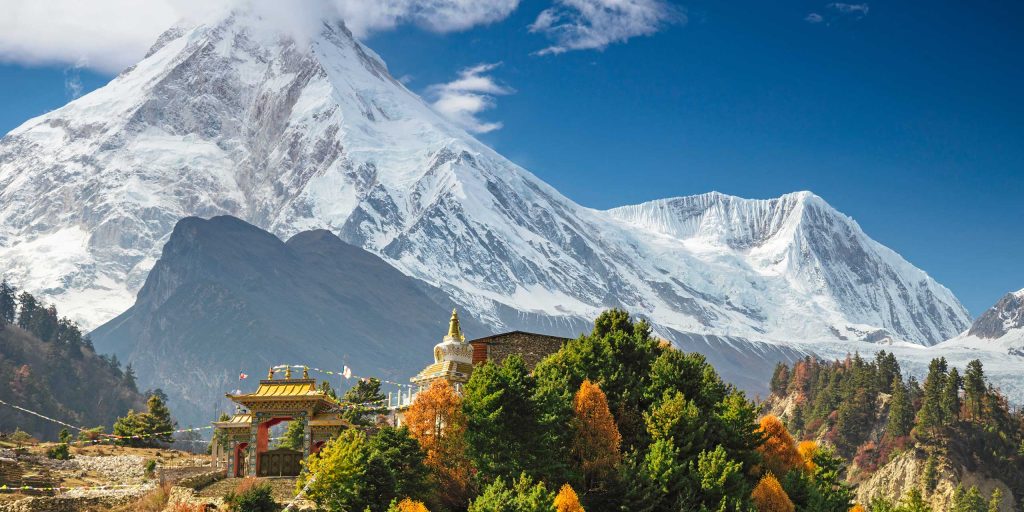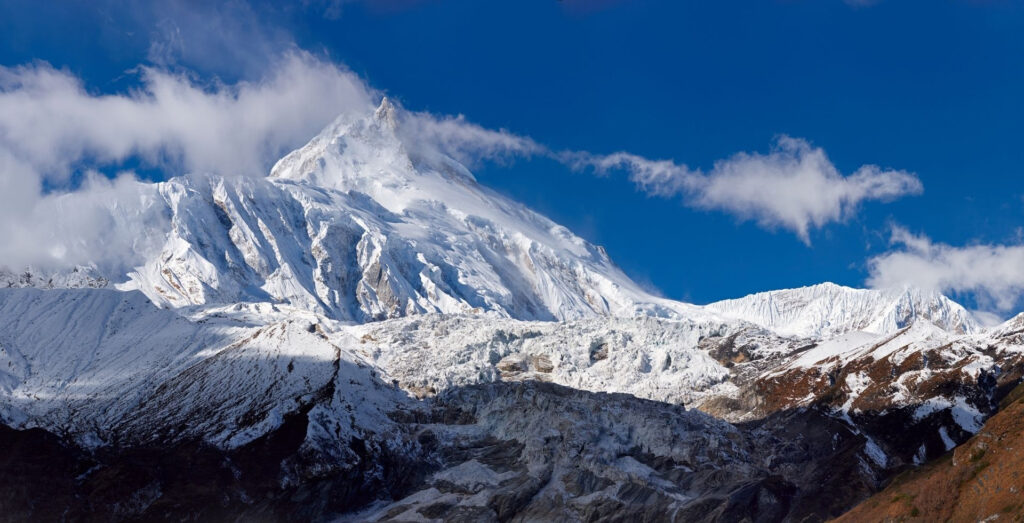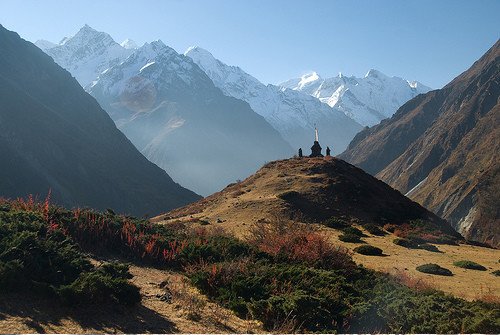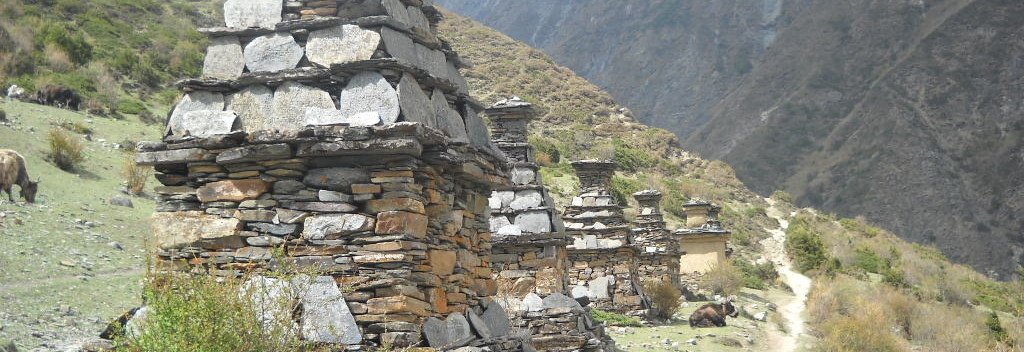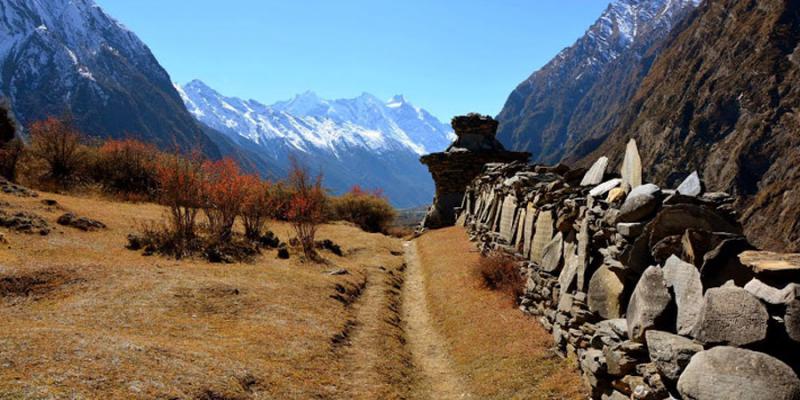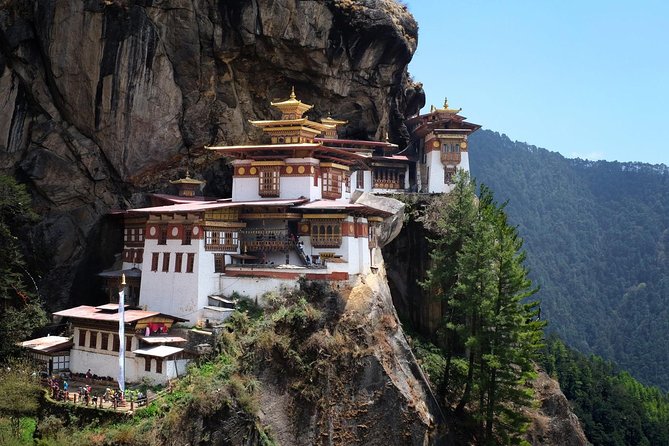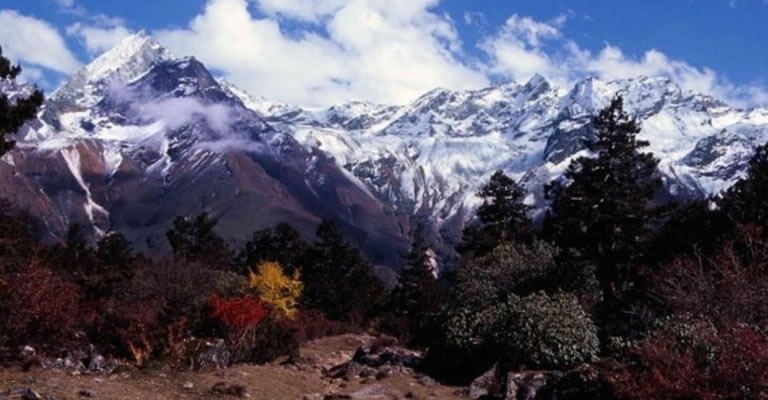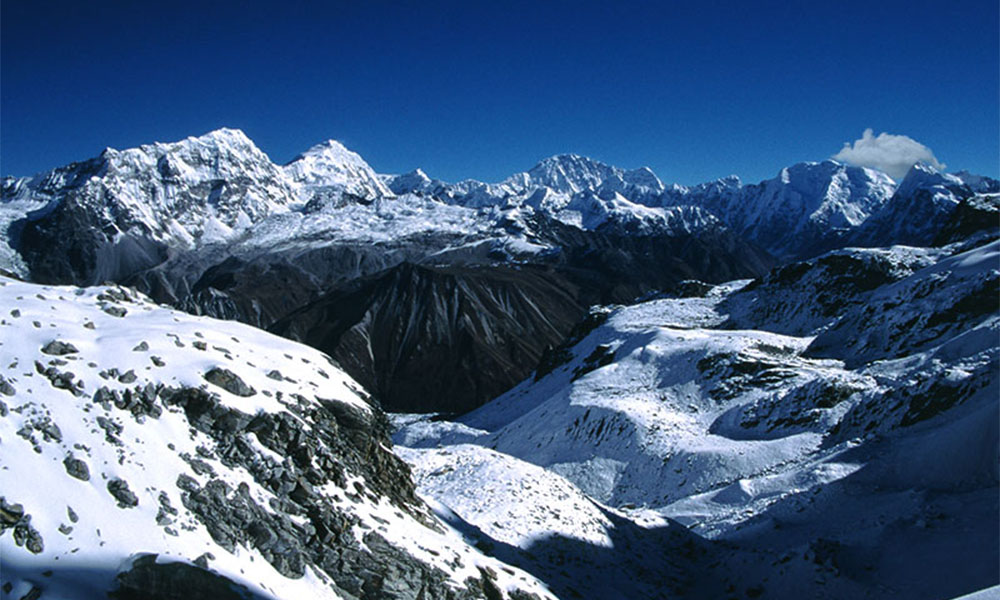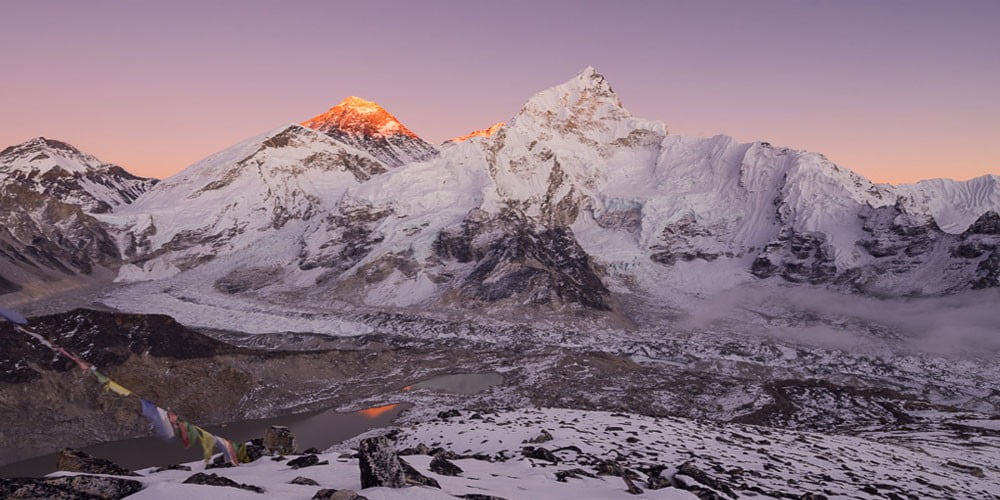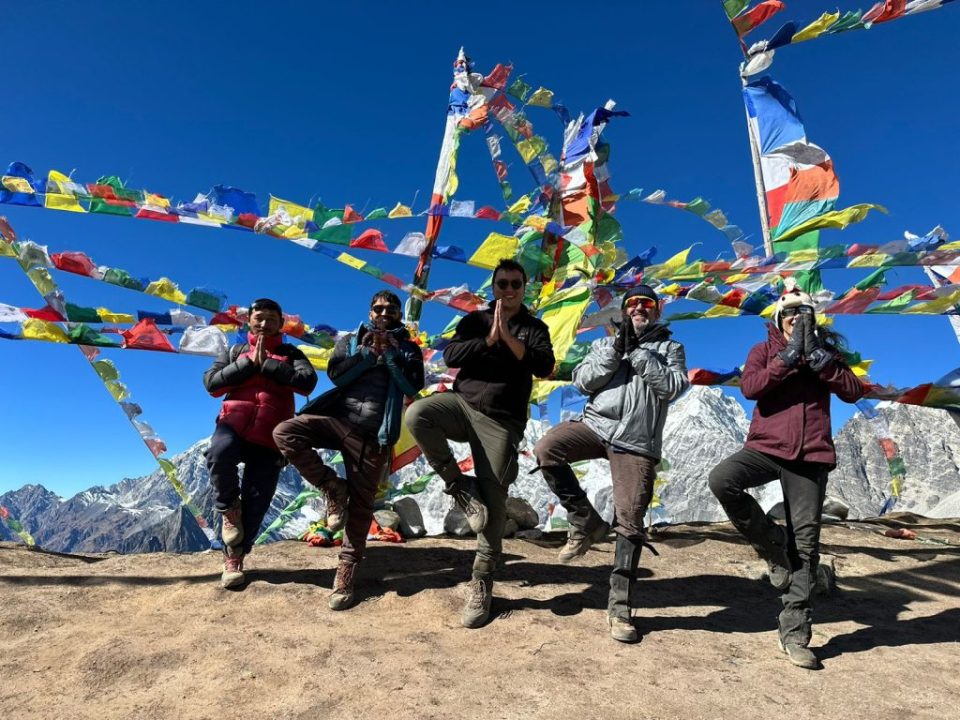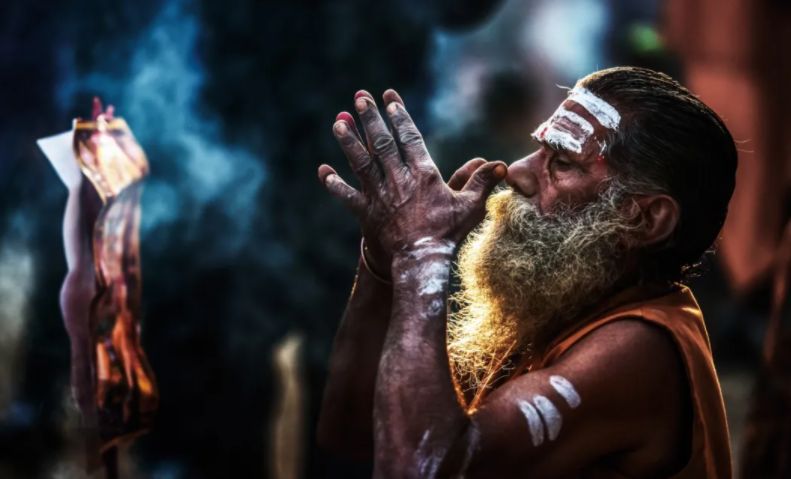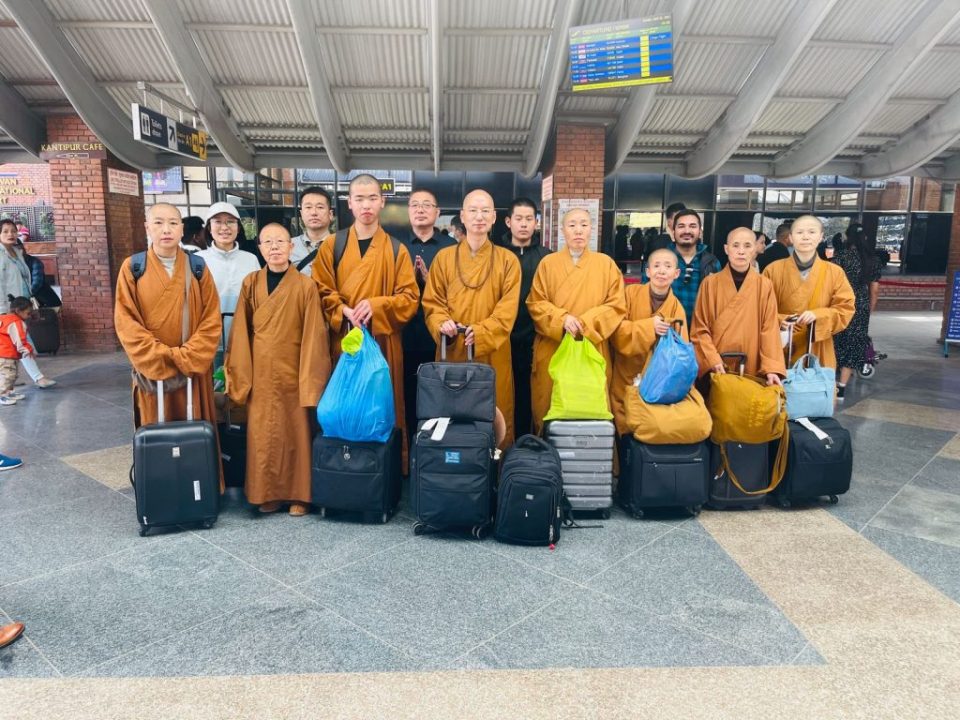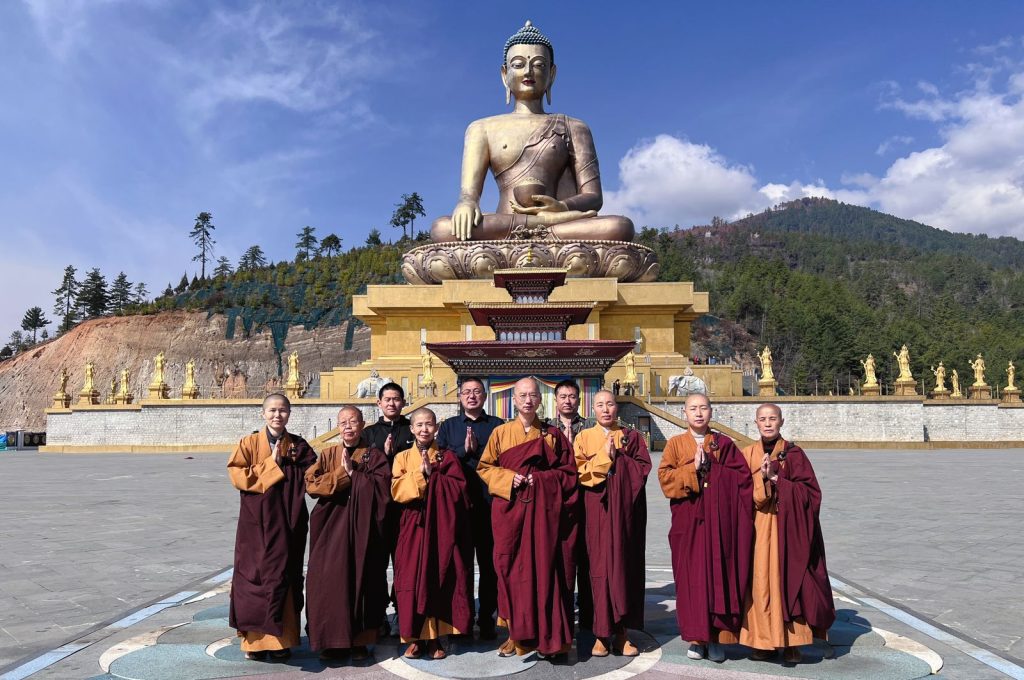Tsum Valley Trek
Trip Introduction
Tsum valley is the hidden valley located in Gorkha district, east of Manaslu, on the Tibetan border. This trek is the ideal blend of authentic culture and breathtaking scenery. Tsum is derived from the Tibetan word “Tsombo”, which means “vivid”. It is a newly opened trail in an unexplored valley filled with ancient villages and Tibetan Buddhist monasteries just waiting to be discovered. Beautiful mountain ranges such as the Ganesh Himal, Sringi Himal, and Boudha Himal ranges can be seen.
The people of Tsum valley, also known as Tsumbas, are of Tibetan origin, with their own traditional type of art, culture, and religion. The valley makes its way through a rich and wild scenery, with steep gorges, settlements, gompas, chortens, and snow-capped peaks. You’ll go through challenging terrain, steep, rocky paths, and simple accommodation. Dhacyhang, Lhosar, and Sawa Dawa are three popular local festivals celebrated in Tsum valley, where you may learn about and participate in unique local culture and custom.
The trek starts with a seven- to eight-hour drive from Kathmandu to Soti Khola via Arughat. The trek starts in Soti, a small village on the banks of the Budhi Gandaki. We will ascend the Budhi Gandaki valley on good paths for the first half of the trek, passing through dense forest, terraced fields, and villages. In the second half of the trek, we leave the Manaslu trail and head toward Tsum Valley, where you will begin to enjoy the hidden valley. We will travel through alpine forests, glacial rivers, and experience authentic culture. You will also visit the region’s old Gompas: Rachen Gompa and Mu Gompa.
Itinerary
Departure from : Kathmandu, Nepal
Arrival On : Kathmandu, Nepal
Day 1
Arrival at TIA Kathmandu
| Days | Activities | Duration |
| 1. | Arrival at TIA Kathmandu (1,400m/4,592ft) | |
| 2. | Drive to Soti Khola via Arughat (700m/2,296ft) | 7-8hrs |
| 3. | Trek from Soti Khola to Machha Khola (870m/2,854ft) | 5-6hrs |
| 4. | Trek from Maccha Khola to Jagat (1,340m/4,396ft) | 6-7hrs |
| 5. | Trek from Jagat to Lokpa (2,040m/ 6,692ft) | 6-7hrs |
| 6. | Trek from Lokpa to Chumling (2,386m/7,828ft) | 4-5hrs |
| 7. | Trek from Chumling to Chhokang paro (3,031m/9,944ft) | 5-6hrs |
| 8. | Trek from Chhokang Paro to Nile (3,361m/11,026ft) | 4-5hrs |
| 9. | Trek from Nile to MU Gompa (3,700m/12,139ft) | 3-4hrs |
| 10. | Trek from MU Gompa to Rachen Gompa (3,240m/ 10,629ft) | 4-5hrs |
| 11. | Trek from Rachen Gompa to Chumling (2,386m/7,828ft) | 6-7hrs |
| 12. | Trek from Chumling to Phillim (1,590m/ 5,217ft) | 6-7hrs |
| 13. | Trek from Phillim to Dobhan (1,070m/3,510ft) | 6-7hrs |
| 14. | Trek from Dobhan to Lapubesi (880m/2,890ft) | 7-8hrs |
| 15. | Trek from Lapubesi to Arughat (560m/ 1,840ft) | 4-5hrs |
| 16. | Drive back to Kathmandu | |
| 17. | Rest Day | |
| 18. | Departure |
Upon arrival at Tribhuvan International Airport (TIA). Our agent will greet you and accompany you to the hotel. Drive to the hotel and check-in. Our guide will come to see you in the evening and give you a brief overview of the journey. At the hotel, we had dinner and stayed the night.
Day 2
Drive to Soti Khola via Arughat
Today, after breakfast, we’ll take the Kathmandu-Pokhara highway to Soti Khola. We’ll drive through a small town, a green terrace, and a hillside. From Kathmandu to Arughat, we’ll be driving on paved roads. We’ll stop for lunch on the way. We’ll be on the road for 7 to 8 hours. Dinner and Overnight at the Lodge.
Day 3
Trek from Soti Khola to Machha Khola
Today is the first day of our trek; we will leave for the Machha Khola after breakfast. We will be walking through various landscapes such as forests, rice paddies, rushing rivers, and waterfalls. We should go through the bridge. We’ll hike through a beautiful forest and up a hill above the Budhi Gandaki River. We’ll stop for lunch on the way. We’ll be passing through the Gurung village of Khursane. We will be walking for about 5 to 6 hours. Dinner and Overnight at the Lodge.
Day 4
Trek from Maccha Khola to Jagat
We’ll leave for Jagat after breakfast today. Today, we’ll follow the George and make our way up to the river. We will be passing through a narrow path first, followed by a gentle path that goes up and down. To get to Khorlabesi, we’ll have to cross the Tharo Khola. We’ll arrive at Tatopani after some uphill and downhill hiking and rest for a while. We’ll ascend another hillside before crossing the Budhi Gandaki on a suspension bridge. We’ll stop for lunch on the way. Thus, after a few ups and downs, it arrives at the wonderful village of Jagat. Dinner and Overnight at the Lodge.
Day 5
Trek from Jagat to Lokpa
Today you will have breakfast with a view of Shringi Himal before we depart for Lokpa. We will climb the rocky hill to Salleri and then descend to Sirdibas. To get to Philim village, we’ll cross the suspension bridge over the Budhi Gandaki. We’ll stop for lunch on the way. We’ll leave for Ekle Batti after lunch; the trail is flat until there. We will climb to the point of two rivers that separate the Manaslu circuit trek and the Tsum valley trek. From there, we’ll take the right track to Tsum Valley. Dinner and Overnight at the Lodge.
Day 6
Trek from Lokpa to Chumling
We will have breakfast today and then depart for Chumling. We will walk for 4 to 5 hours today to cover a short distance, but the terrain is difficult because we must climb a steep uphill. We’ll be passing through a forested area and will see the long, deep Sardi gorge along the way. We can see Ganesh Himal and Baudha Himal throughout the trip. We’ll go through dense pine, juniper, and Rhododendron Forest. We will explore the Gompa in Chumling. Dinner and Overnight at the Lodge.
Day 7
Trek from Chumling to Chhokang paro
We’ll leave for Chhokang Paro after breakfast today. Upper Tsum valley is another name for Chhokang Paro. We will pass the hillside and enjoy the magnificent view of Ganesh Himal. To get to Gho village, we’ll cross the suspension bridge. We’ll eat our lunch on the way. It takes 2 hours to get from Gho to Chhokang Paro. Dinner and Overnight at the Lodge.
Day 8
Trek from Chhokang Paro to Nile
Today, after breakfast, we will depart for Nile, the last settlement in the Tsum valley. We will walk uphill to reach Lama gaon, where the famous Milarepa cave is located. The cave is well-known because it was where the Tibetan guru meditated in ancient times. We will then proceed to the Rachen Gompa, which will require us to cross the suspension bridge. After visiting the Gompa and exploring the surrounding area return back to Nile. Dinner and Overnight at the Lodge.
Day 9
Trek from Nile to MU Gompa
Today, after breakfast, we will depart for MU Gompa, the shortest day of the trek. We’ll walk right up to the Tibetan border. We will softly climb uphill toward MU gompa, one of the region’s largest monasteries. Explore the Gompa and learn about their culture and traditions. Dinner and Overnight at the Lodge.
Day 10
Trek from MU Gompa to Rachen Gompa.
After breakfast today, we will depart for Rachen Gompa. You’ll be on the trail for 4 to 5 hours. To get to the gompa, you must first descend to Chhule and then to Phurbe. To get to Rachen gompa, we need to go through Shiar Khola. The Gompa is surrounded by breathtaking scenery. You can walk around the gompa and learn about its traditions. Dinner and Overnight at the Lodge.
Day 11
Trek from Rachen Gompa to Chumling
We will depart for Chumling after breakfast today; we have a long path to cover and will descend through forested areas to reach Chumling. We’ll stop for lunch on the way. Throughout the trail, we’ll be enjoying the scenery. We’ll be out walking for 6 to 7 hours. Dinner and Overnight at the Lodge.
Day 12
Trek from Chumling to Phillim
Today we will have breakfast with a view before departing for Phillim. We’ll continue on our way downhill. We’ll walk along the Shiar Khola’s bank until we reach Lokpa village. We will pass through several monasteries. We’ll eat our lunch on the way. We’ll pass by the beautiful Samba waterfall on our way to Phillim Village. Dinner and Overnight at the Lodge.
Day 13
Trek from Phillim to Dobhan
We’ll leave for Dobhan after breakfast today. We’ll make our way downhill toward Sirdibas. You will enjoy the trail with a beautiful view of Ganesh Himal. We’ll pass by several waterfalls and small villages. We’ll stop for lunch on the way. Dinner and Overnight at the Lodge.
Day 14
Trek from Dobhan to Lapubesi
We’ll leave for Lapubesi after breakfast today. We will be passing through numerous small water streams, as well as a natural hot spring where we will be able to relax for a while. After crossing the Thado Khola, the path descends to the Maccha Khola, from which we walk along the bank of the Budhi Gandaki to reach Lapubesi. Dinner and Overnight at the Lodge.
Day 15
Trek from Lapubesi to Arughat
We’ll leave for Arughat after breakfast today. To get to Khursane, we’ll have to walk half the way up a steep, rocky trail. We will travel through the Sal forest to get to Soti Khola. After crossing Arkhet Khola, we will leave the Budhi Gandaki valley and travel to Mangaltar, where we will arrive at Arughat Bazaar. Dinner and Overnight at the Lodge.
Day 16
Drive back to Kathmandu
Today, after breakfast, we will depart for Kathmandu. Kathmandu is 125km away from Arughat. We’ll take the Kathmandu-Pokhara highway to reach Kathmandu. We will be on the drive for 7 to 8 hours. You will be driven to the hotel, where our representative will assist you with the check-in process. Dinner and Overnight at the Hotel.
Day 17
Rest Day in Kathmandu
Today is your last day in Kathmandu and your relaxation day. You are free to do whatever you choose with your day. You are free to walk through Thamel and Basantapur streets as much as you wish. Enjoy a complimentary farewell supper at a traditional Nepali restaurant later that evening.
Day 18
Departure
The 17-day journey has concluded. Today is your last day in Kathmandu. Our representative will have a short discussion on the trip and take your feedback after a hearty breakfast. Following this session, he will drive you to the airport in our private transportation 3 hours before your trip.
Route Map
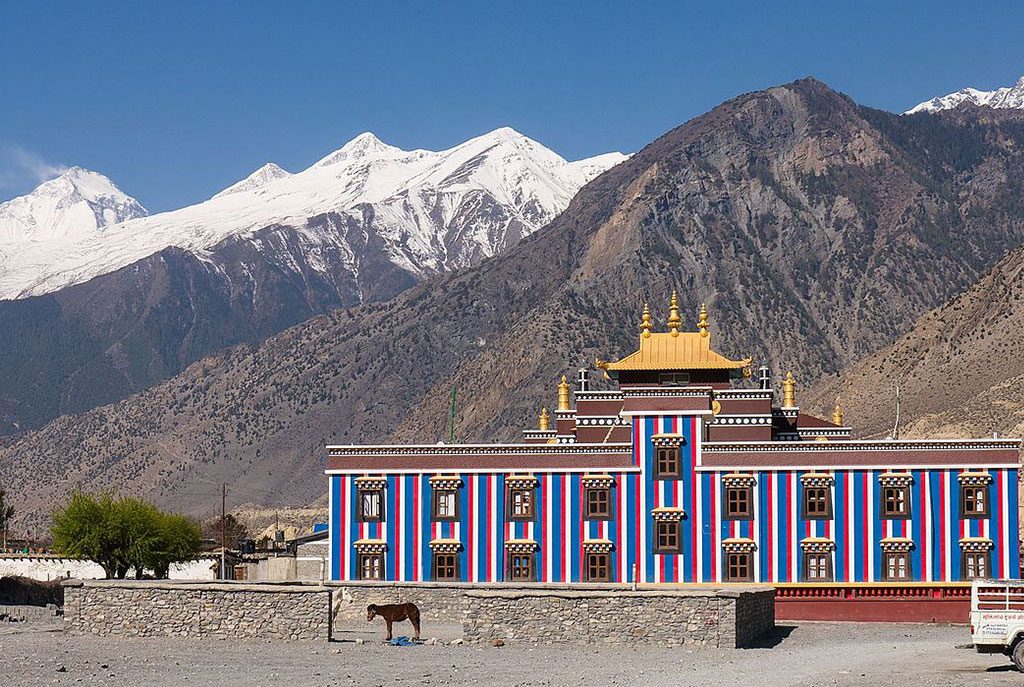
Altitude Map
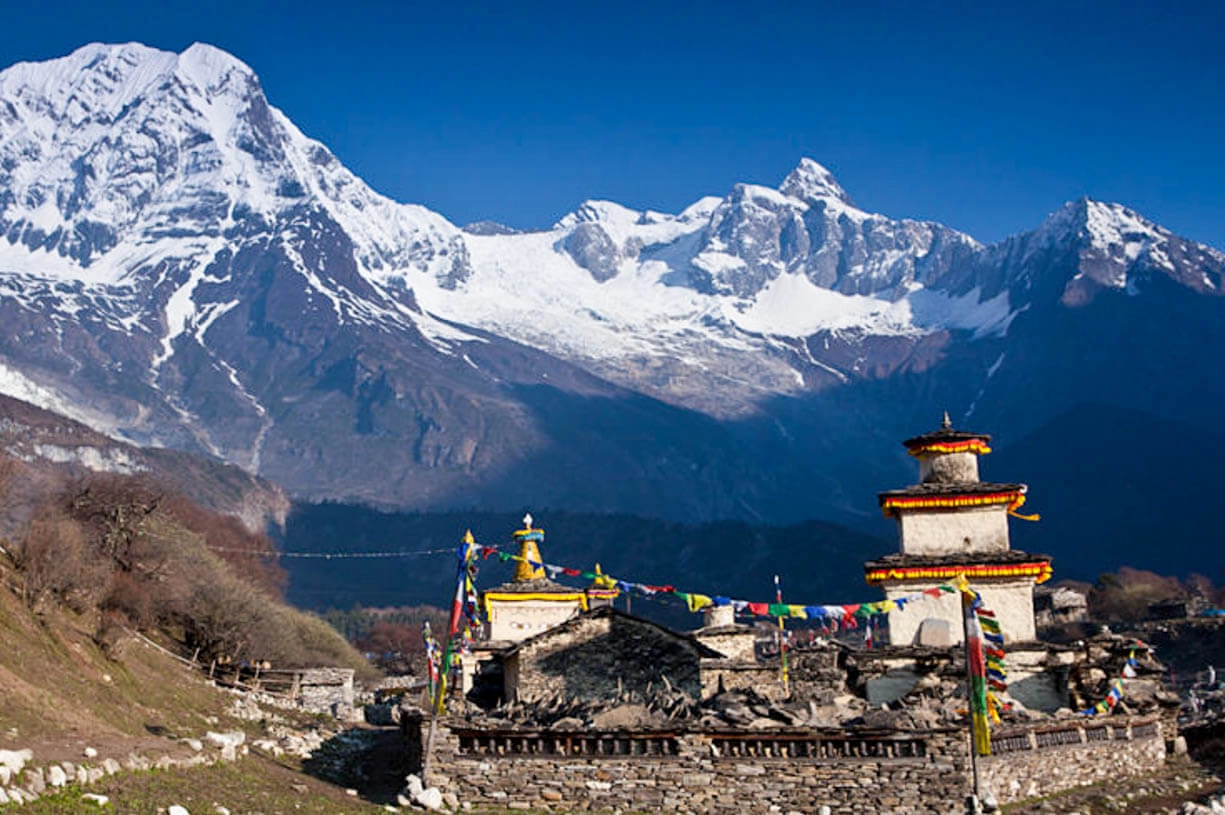
What's Included
- Arrival & Departure: Airport – Hotel transfer – Airport (Pick Up and Drop).
- Hotel Accommodation in Kathmandu: 3nights at Star categories hotel on twin sharing and BB basis.
- Welcome Dinner and farewell dinner at Nepali culture restaurant in Kathmandu with Office’s Staff.
- All necessary Permits and paperwork: MCAP Permit, Tsum Valley Restricted Area permit, and TIMS Card.
- All government and local taxes if necessary.
- Trekking Map: Manaslu Region Trekking map.
- Member transportation: – Road Transportation: From Kathmandu – Soti Khola and Dharapani to Kathmandu.
- Food & Lodging: 3 meals a day (Breakfast, Lunch, Dinner) along with accessible accommodation sharing at Hotel/Lodge/teahouse during the trek.
- Drinking water: 2 liters of boiled water to carry on thermos per day per member.
- Guide: Government licensed Guide (English speaking) during the trek
- Porter: Porters (2 trekkers: 1 porter) up to 15kg during the trek.
- Insurance: Insurance for all involved Nepalese staff during the trek.
- Comprehensive Medical kit.
What's Not Included
- Air Fare: International flight airfare (from and to Kathmandu).
- Nepal entry visa fee.
- Extra night in Kathmandu: Extra nights’ expenses in Kathmandu. In case of early arrival or late departure, early return from Trekking (due to any reason) than the scheduled itinerary.
- Personal Insurance: Travel and high-altitude insurance. *Mandatory
- Personal Expenses: Telephone calls, Internet, Toiletries, battery recharge, hot shower, laundry, soft drinks, beer, and any alcoholic beverages.
- Personal Equipment: Clothing, Packing Items or Bags, Personal Medical Kit, Personal Trekking equipment.
- Rescue Evacuation: Medical and emergency rescue evacuation costs if required. (Rescue, Repatriation, Helicopter, Medication, Medical Tests and Hospitalization costs).
Equipment List
What to bring ?
General
Tailor Your Holiday
Everyone has their own preferences in terms of destination, journey time, and budget. As a result, sticking to our plan isn't necessary. We will create a personalized itinerary for you that includes accommodations, transportation, meals, and tour guides. We guarantee you the best Tailor-made Package because this is your trip. You have the option to personalize it, as your liking. Let us Plan together to make your Vacation worth it.
Fixed Departure
Why Travel With Us?
Secure Online Payment, No Credit Card Fee
Travel with Locals. Support Locals
Lifetime Deposit
Private & Tailor-Made Trips
24/7 International Support
Support Local Communities & Donate to Charity
All Inclusive Price
Secure Online Payment, No Credit Card Fee
Trip Facts
| Country | Nepal |
| Duration | 18 Days |
| Maximum Altitude | 3,700m/12,139ft |
| Region | Manaslu |
| Meals | Breakfast, Lunch, Dinner |
| Accommodation | Hotel, Lodge, Teahouses |
| Grade | Challenging |
| Best season | Mar, Apr, May, Sep, Oct, Nov |
Trip Highlights
- Trek beneath Manaslu, the world’s eighth highest peak.
- Trek to hidden valley on the less crowded trails.
- Jaw-dropping Ganesh Himal, Sringi Himal, and Boudha Himal ranges are all visible in the distance.
- Pass through the natural beauty, landscape, Flora and Fauna.
- Explore ancient Buddhist monasteries, Chortens and Mani walls.
- Visit Mu Gompa a scared monastery of Tsum valley.
- Explore Rachen Gompa large monastery for Nuns in the region.
- Experience the unspoiled culture and Tradition Tsumbas.
Is this trek appropriate for you?
- The Tsum valley Trek is the Challenging Trek. You can easily complete this trek if you are physically and mentally prepared and willing to do so.
- You will be Trekking for 13 Days. The Path can be completed in as little as 3 hours as much as 8 hours.
- The walk is not tricky, there is no Climbing or Scrambling but the path is rocky and hilly.
- Each day you will cover 200 to 400 meters in height while trekking. The highest point in the trek you will reach on the trek is 3,700m.
- The weather and Remoteness of this trek, as well as dealing with the high altitude, require a slow pace and the need to stay hydrated
The ideal season to travel
Spring
March: The month of March is ideal for trekking and admiring the spectacular mountain peaks. The Manaslu trekking trail will be crowded with hikers beginning in March. In the Manaslu region, the spring season begins in March, the month of the Rhododendron. Trekking in March will provide you with the most memorable experiences in a pleasant and mild climate. At lower altitudes, the weather is not particularly hot, and at higher altitudes, it is not particularly cold. The views of the mountains are spectacular, and the trail is excellent. Nature can be experienced at its most beautiful.
April: April is the beginning of spring in Nepal, and the weather is ideal for trekking to Manaslu Region. The views are bright and clear at this time of year, and everyone enjoys spring. The surroundings are vibrant and colorful, with rhododendrons in bloom. It is the best time of year to see various bird and butterfly species. During your April trip to Manaslu, the weather is completely in your favor. The moderate heat of the sun, combined with the lack of wind, makes it ideal for trekking. Furthermore, the amount of rain and snow is insignificant.
May: May, the final month of the spring season in Nepal, is much hotter. The Manaslu Region trek in May has the highest temperature of the year. Temperature and weather will vary depending on the altitude throughout the trek. During the day, the weather in the lower sections will be extremely hot. The nights, on the other hand, are tolerable.
Summer
June: June is the coldest time of the summer and has the least amount of rainfall. The month of June is the offseason and therefore less popular for trekking. In the region, June marks the start of the wet monsoon season. The weather is slightly humid, and you can enjoy nature while it is wet and cool. If you enjoy the rain, rainbows, and less crowded trails, this is the month for you. During this month, the air begins to become humid due to continuous rain.
July: Trekking in Nepal in July isn’t always joyful because the heavy rains can block your view of the beautiful mountains you’ll pass through. In July, you will notice that the temperature is not as chilly in the Manaslu Region. As the rain washes away the dust and pollution, the environment opens up and becomes very fresh, and you will be able to enjoy nature despite the chilly weather.
August: In the Manaslu region, August is the off-season for trekking. In August, the monsoon season produces strong rains, especially in lower places. Due to weather-related concerns, most hikers avoid this month. The summer monsoon season comes to an end in August. It rains regularly, and you may feel a little chilly as a result. You should also be cautious because the trails are slippery and the possibility of landslides and avalanches is considerable.
Autumn
September: The monsoon season finishes in September, marking the start of the fall season. The optimum time to trek to Manaslu Circuit Trek is in September. The weather and temperature for the Manaslu Circuit Trek are ideal. The temperature is pleasant during the day, but it is extremely chilly at night.
October: October is the month that falls between September and November. As a result, it keeps both monsoon rain and winter’s biting cold at distance. The weather is warm and pleasant in October, with clear skies and fresh air. The nights, on the other hand, are a little chilly, with a brisk breeze coming from the campsite. Throughout October, the weather is pleasant, allowing people to enjoy an unobstructed view of the snow-capped peaks. They can also visit bright valleys and interesting scenery of various colors.
November: The last declared peak season for trekking in Nepal is November. Bright, sunny days and beautiful skies characterize November. On the treks, these provide breathtaking, crystal-clear vistas of the mountains. The days are bright and sunny in November. The sky is clear, with perhaps a few stray clouds possible.
Winter
December: In the Manaslu region, December is a rather dry month. It receives fewer than 25 millimeters of rain every year. The Manaslu region is in the shadow of the Himalayas. As a result, December has a lower chance of rain. It is also possible to walk the Manaslu Circuit Trek in December. In December, hikers will get a unique perspective of the region.
January: In Nepal, January is in the midst of winter. The higher elevation receives moderate snowfall, whereas the lower elevation is ideal for trekking. During the day, you will feel warm, but as night falls, you will feel cold. In January, these areas receive little to no rainfall. As a result, the skies remain clear and the surroundings appear even sharper. The trails will be covered in snow, so you may need crampons to cross the pass.
February: The Manaslu Region trek in February is an escape from the hustle and bustle of everyday life to a place where all you can see are mountains and scenery. It’s peaceful because February is the coldest month of the year. Most people dislike trekking in the winter because they believe it is extremely difficult.
Drive to Soti Khola.
- The Distance between Kathmandu and Soti Khola is 136 km.
- Traveling to Soti Khola by jeep will take around 7-8 hours.
- The route to Soti Khola from Kathmandu is Naubise – Galchi – Kurintar – Muglin – Arughat and lastly Soti Khola.
Altitude sickness
Tsum Valley trek is the trek beyond the altitude of 2,500m and altitude sickness is the sneaky monster that sometimes attacks even the fittest trekkers beyond 2,500m (8,000ft).
As a result, preventing altitude sickness on the trek and remaining healthy throughout the trek should be your top priorities. With lower air pressure and lower inspiratory oxygen pressure, you have to hike into the high-altitude zone. Acclimatization is the process of progressively becoming familiar with the new climate or changing environmental conditions. Almost everyone going quickly from lower to higher elevations requires altitude adaptation.
At elevations beyond 2,500 meters, AMS symptoms can be detected like:
- Increased breathing.
- Increased urination
- Restless sleep.
- Periodic breathing at night because of altitude.
- Dehydration.
- Shortness of breath.
- Extreme fatigue.
- Respiratory failure.
- Cerebral edema.
- Coma.
To guarantee that the condition does not worse, certain precautions should be taken. However, if the symptoms increase, it may be necessary to return to a lower height and seek medical assistance.
- Walk slowly and gradually, as our bodies require time to adjust to the oxygen level. At least one day of acclimatization rest is required for high altitude trekking, and you should go as high as possible before returning to a lower height for the night.
- To gain strength stamina for your Manaslu Region journey, you should undertake various strength training exercises such as running, cycling, jogging, push-ups and going to the gym.
- The greatest remedy is to always stay hydrated. On your walk, instead of drinking cooled water, drink warm water and avoid alcohol, cigarette, and tobacco. You should also eat a balanced diet for strength.
- Before traveling to an altitude greater than 3000 m, you must properly acclimate. If your body displays any signs of altitude sickness, you must either stop immediately where you are or consider descending to a lower altitude.
Things to know before traveling to Manaslu Region.
Drinking-Water at Tsum valley
Especially for trekkers, it is very necessary to hydrate your body at a higher altitude than in lower elevations to avoid dehydration and altitude sickness. Lack of fluid can be the main hindrance during the trek. You should hydrate your body with at least 3-4 liters of water daily (Tea, soup, or normal drinking water).
Getting water in the Manaslu region is not difficult but getting safe drinking water is. Throughout the trek, you will come across tap and spring water, but it is not safe to drink without purifying it. You can buy the plastic bottle water in the teahouses but get expensive as you climb in the higher altitude, and it pollutes the local ecosystem, therefore we recommend you to use a Reusable water bottle or water pouch favorable for both hot and cold water.
During this trek, you may have to pay from 1$ to 2$ (Tsum valley) for a sealed bottle of water. Here are some ways that you can use to make the water drinkable.
- Boiled water
Boiling water is the best way to purify the water. As we are climbing to a higher altitude you need to boil the water for about 3-minute and season it with a pinch of salt before drinking. You can get free cold water in the teahouse but for boiled water, it cost around 1-1.5$ per liter and 2$- 5$ for a large pot.
- Purification tablets or electrolyte powder.
Purification tablets like chlorine or iodine tablets are commonly used tablets by trekkers to disinfect the water. 1 tablet is enough for a liter of water. It takes around 30 min for the tablets to dissolve and become drinkable. Water, purified by tablets may leave a taste in your mouth.
Electrolyte powder is another option. Electrolyte powder is a better way to purify water than tablets because electrolyte powder contains minerals such as salt, Potassium, Magnesium, which are important for your body during the trek. These tablets are available at any pharmacy in Kathmandu.
- UV Light water purifier/ SteriPEN.
It is a simple, effective, economic, and environment-friendly way to purify water. It kills the bacteria and virus within 10 sec by exposing them to ultraviolet light using Steripen, without changing the flavor of the water. You can buy this SteriPen online. This is a highly recommended means of purifying water.
Electricity and Internet facility at Tsum valley.
Electricity facility.
Manaslu region doesn’t have an electricity problem. All the area in this region is either powered by local hydropower electricity or Solar panels electricity except Gumpa Lungdang and Dharmasala.
The area of the Manaslu region near the town area (Arughat, Soti Khola, Jagat, Tsum valley) is powered by local hydropower projects, besides that most of the area of Manaslu Region relies on solar panels which is enough to light bulbs in the rooms and charge small devices. There is a commonplace for charging usually in the dining area. Using electricity for charging by local hydropower is not a problem, but charging your device at a higher altitude will charge you some dollars (2-4$) per hour as well your device might get problems while charging from solar power. So, it’s better to bring a power bank that is sufficient to charge your device during your whole trek.
Internet Facility and Service
Internet and network facility is needed to contact your family, friends, employee, to post updates and upload photos during the trek.
Manaslu region does have internet access, but it lacks a stable connection due to its high altitude. Few lodge/ teahouses in Manaslu up to Tsum Valley have Wi-Fi availability. Some provide it free of charge and some charge an amount. However, you can connect to the internet via. your cellular network’s data package.
NCell and NTC cellular service does not have connectivity in the Manaslu region. Only Ntc -CDMA network is available in Manaslu Region, known as the SKY network. So, people in the Manaslu region use CDMA phones. You can buy the Sky Simcard from the stores in Kathmandu for 1$. PDSN (Packet Data Switching Network) provides you high-speed internet connection up to MU Gompa-Tsum valley which is the highest point of our trek. Your phone may not support a CDMA network, so first check your phone in any local cyber-shop if it supports a CDMA network. If not buy a phone in Kathmandu that supports NTC’s CDMA network.
| Buy CDMA data package by SMS.
Write ‘NTC Data packages’ and send it to 1415. Buy CDMA voice package by SMS. Write ‘NTC voice packages’ and send it to 1415. |
Check balance
Dial*1415# and Press 1. |
For more information about the NTC CDMA network, here is the link.
Document needed to buy a sim card.
For foreigner = 1 passport size photo, Passport photocopy, or valid identity card.
For Nepali = 1 Passport size Photo, Photocopy of Citizenship.
Some useful tips to reduce the use of electricity.
- Extra batteries for the camera.
- Power bank with 5000-10000mAh.
- The solar charger and solar lamp (LuminAID Lamp).
- As possible less usage of a device with low brightness, GPS, and WI-FI off.
Essential Backpack items for Tsum valley Trek.
The bag of a trekker also reveals the trekker’s level of experience. A good trekker should be a smart backpacker. You should be pre-prepared for the things that you need in the trek.
Here are some of the things that you need to take with you for the trek.
Travel documents
- Airline tickets with the itinerary.
- Travel insurance policy documents.
- Valid passport.
- Copies of passport.
- Passport-sized photos.
- Nepalese cash.
- Travel permits.
Clothing
- A pair of waterproof trekking shoes or hiking boots.
- A pair of flip flop slippers or running shoes.
- 2 sets of thermals (leggings and tops)
- 3-4 pairs of hiking long sleeve shirts or tops.
- Pairs of hiking shorts and pants.
- Fleece jumpers or a set of tracksuits.
- Good quality windproof down jacket.
- Lightweight waterproof rain jacket and pants.
- Neck gaiter, leg warmer, and packet of pocket hand warmers.
- 4-5 pairs of quick-dry socks, underwear, sports bra.
- Pair of inner and outer gloves.
- Knitted Hat, sun cap, beanie, or bandana.
- Glacier Sunglasses and eyeshade.
Trekking equipment
- Waterproof trekking bag of 40-50liter and Rucksack of duffel bag (if your backpack is not enough for all your item and need a potter).
- Reusable water bottle (both hot and cold) of at least 1-2litre.
- A sleeping bag and sleeping bag liner.
- Trekking stick/ poles.
- Pair of ice traction (crampon).
- LED Headtorch or solar lamp (LuminAID lamp).
- Stuff sacks, plastic bags.
- Plug adapter, Charging appliances, power bank, batteries.
- Pocket knife.
- Travel Wallet.
Toiletries
- Rolls of Toilet paper, wet wipes, and tissue.
- Medium-sized quick-drying towel.
- Toothbrush and toothpaste.
- Hand sanitizer.
- Sunscreen, lip balm, body lotions.
- Deodorants.
- Portable mirror.
- Shampoo and soap.
Personal First Aid Kit
- Antibiotics
- Painkillers, Paracetamol, ibuprofen, aspirin, Nicole
- Sanitary pads
- Bandage.
- Anti-inflammatory spray.
- Anti-Nausea tablets.
- Anti-diarrhea pills or power.
- Altitude sickness tablets.
- Water purifying tablets or electrolyte powder.
- Mosquito and Insect Repellent
- Salt or anti-leech oil (If traveling in the rainy season, July- Aug)
- Earplugs
You can buy or hire trekking clothes and equipment in Kathmandu. If you are buying it, you have to allow an extra day for shopping; however, if you are hiring it, you must inform us in advance so that we can arrange it before you arrive in Kathmandu. This way you can reduce the weight of your luggage and save time and money.
Branded trekking clothes and equipment are available around the Thamel area at a reasonable price.
Accommodation, Meal, and Transportation
Accommodation
We will accommodate in star hotel during our stay in Kathmandu. During the trek, we stay at lodges/ teahouses or Homestays.
Meal
During the trek, we will provide you three-time meals.
Breakfast– Tibetan Bread, Eggs, Tsampa porridge, Tea, etc.
Lunch– Dal Bhat (Rice, Vegetable curry, Meat curry, Lentils, Tomato Chutney) Vegetable noodle soup, Chicken soup, Garlic soup, Dumplings, etc.
Dinner– Dal Bhat (Rice, Vegetable curry, Meat curry, Lentils, Tomato Chutney), Potato cheese dumplings, Fried noodles, etc.
Besides these, there are a variety of other options of food. You can buy it from your pocket.
Transportation
By Bus- From Kathmandu airport to hotel at Kathmandu and vice-versa.
From Kathmandu- Sotikhola, and back.
By Air- Flight to Nepal.
Guide and Staff Arrangements
Throughout the trek, all your activities will be handled by our well-qualified and professional staff. We will do all the escorting. We are providing you with a highly experienced and licensed local guide with fluent English speaking and has excellent communication skills. We will accompany you from Kathmandu and guide you to Tsum Valley. Each group of 4-5 trekkers will be assigned an assistant guide, as well as a porter for two trekkers (2*15kg =30kg). If your luggage weighs more than 15kg you will be provided a porter individually but you will be charged for 2 people.
All our lead guides, assistant guides, and potters are well professional and experienced. So, we hope for your respect and cooperation with us throughout the trek.
A typical day on the Tsum Valley Trek.
Every day will begin with the ringing of your alarm clock at 6 a.m. and a knock on your door from your guide with the invitation of breakfast. Get up, have breakfast, pack your backpack and get ready to start your day’s walk by 7 a.m. We need to start our trek early to avoid the scorching sun and in the midafternoon the wind gets stronger compared to the morning in higher altitudes.
You’ll wander along with the Rhododendron, Maple, Pine, and Oak Forest trail enjoying the scenery, clicking photos, creating memories, passing by other travelers, interacting with your guide, hearing each other’s stories. Other than your teammate mules and Yaks will be your walking companion. Lunch will be served at a local teahouse in the late afternoon (1-2 am). Having lunch and an hour of rest, we will proceed to the day’s final destination as per the itinerary.
On arrival at the destination, check into your accommodation. Get freshen up and some rest. As every teahouse where we stay has a large common dining area with a wood-burning stove in the center, there you will get to meet other travelers. You can sit there, laugh at each other stories, play cards, sing songs, play music, and have a good time. This will help you forget all the tiredness of the day. Later in the evening, you will have your dinner together. After dinner, your guide will give a short briefing about the next day’s trek regarding when you must get up when we have to start our trek the next day, where we will stay the next day, how many hours we have to walk, and so on.
In this trek, you will walk for a minimum of 3 hrs to a maximum of 8 hrs in a day. You will walk along with the Rhododendron, Pine, and Oak Forest beside Budhi Gandaki River. Explore the Manaslu Base camo on the way. At night enjoy the view of sparkling stars floating in the clear sky above the cold wind. You will have a majestic view of several peaks such as Ganesh Himal, Sringi Himal, and Boudha Himal ranges. Every stop will give you unforgettable emotions. The beauty of this region will be your main motivation to keep moving towards another stop. Not just the natural beauty of this trek but the typical culture of the Tsum Valley region will always remain in your heart and mind. Your hard walk will be paid off on completing the trek with lifelong memories.
Nepal Tourist Visa and permits details
Visa procedure.
To travel to Nepal, you’ll need a tourist visa that is valid for the period of your stay in Nepal. Better, if you have a tourist visa valid for at least 2 months because anything can happen during the trip, and staying in Nepal after your visa expires would result in you paying a penalty. Apply for a visa at your nearest Embassy of Nepal or obtain an On-Arrival visa at immigration in Tribhuvan International Airport, Kathmandu. But better to contact your nearest Nepalese Embassy.
Here are the documents that you need, to apply for the tourist visa.
- The Tourist Visa Application Form for Nepal (Fully completed online and printed)
- Original Passport with at least 2 blank pages and validity of at least 6 months.
- Photocopies of your passport’s information page.
- At least 2 recent passport-sized photos of yourself with white background.
- Proof of accommodation in Nepal.
- Valid travel and return flight tickets.
- A bank statement from the last 3 months with a minimum closing balance of NPR2,00,000.
- Receipt of the visa fee for Nepal.
Note: 15 days visa cost USD 30. Out trip is of 18 days so apply for 30 days tourist visa that costs around USD 50.
Tsum valley entry permits and Requirements
Manaslu region is a restricted area. So, to walk over the Restricted area you have to take special permits from the Government of Nepal. The Entry permits that you need for the trekking in the Manaslu region are;
| Trekking permits | Foreign Nationals | SAARC nationals | Nepali Citizens | |
| 1 | Manaslu Conservation Area Project Entry Permit (MCAP Permit) | NPR 3,000 per person per entry | NPR 1,000 per person per entry | NPR 100 per person per entry |
| 2. | Tsum Valley Restricted Area Permit | September- November
USD 40 per person for the first week. USD 7 per person per day, beyond 1 week. December- August USD 30 per person for the first 8days. USD 7 per person per day, beyond 1 week |
September- November
USD 40 per person for the first week. USD 7 per person per day, beyond 1 week. December- August USD 30 per person for the first 8days. USD 7 per person per day, beyond 1 week |
N/A |
| 3. | Tourist Information Management System card.
(TIMS Card) |
NPR 1,000 per person with a guide (GT) and NPR 2,000 for solo trekkers (FIT) | NPR 300 per person with a guide (GT) and NPR 600 for solo trekkers (FIT) | N//A |
Note: Tsum Valley Restricted Area Permit has to be issued from the Department of Immigration of Nepal, Kalikasthan, Dilli Bazar, Kathmandu. Besides that MCAP Permit, TIMS Card can be obtained from Nepal Tourism Board in Bhirkuti Mandap, Kathmandu.
You won’t need a TIMS card and ACAP permit for the Tsum valley trek unless you cross Dharapani and head toward Annapurna Circuit.
You cannot travel alone in a restricted area so, to issue both Tsum Valley Restricted Area Permit and TIMS Card, you need to apply from a local registered trekking agency with at least 2 members, accompanied by a licensed guide.
For more information about TIMS Card and Restricted Area Permit here is the link.
(If you are traveling from a travel/trekking agency your agency will arrange all the Permits.)
Documents required to get these permits.
- Complete the permit form with your passport details and tour details (Trekking area, Entry and Exit date, and point, Route of Trekking, Emergency contact information for Nepal and your Home country).
- Passport size photos.
- Original passport with a valid visa and Photocopies of passport personal information page.
- Copy of Travel Insurance policy to obtain TIMS card.
For Tsum Valley Restriction Area Permit.
- A letter of guarantee from the tour operator.
- Letter from TAAN.
- Copy of your International flight ticket itinerary (Date of arrival in Nepal) and Trek itinerary.
- Copy of TIMS Card and Manaslu Conservation Area Entry Permit.
- Copy of Company Registration Certificate, Tax Clearance Certificate, PAN Registration Certificate of the trekking company.
Travel Insurance
Trekking in Nepal is an adventurous and occasionally dangerous activity, especially at high altitudes. Trekkers must have travel insurance before visiting Nepal for trekking. During these 16 days trips to Manaslu restricted region, you may encounter a physical injury, illness, or an unexpected accident and you will be responsible for all medical expenses and losses.
So, you need to have travel insurance that will cover all our risk up to the altitude of 3,700m (MU Gompa).
You need to choose an insurance policy that covers all of your possible risks from the start of your journey to your final destination. The following threats should be covered by your travel insurance:
- Cancellation of Domestic and International flights.
- Lost and stolen baggage and passport.
- Hospital and Medical expenses (physical injury, Acute Mountain sickness, Altitude sickness, sudden accident)
- Emergency rescue such as Helicopter cost.
- All high-altitude trek dangers up to 5,500m.
You need to buy your travel insurance wisely so that if in case you come across any such incident, your travel insurance will bear it.
You can have your travel insurance in your home country or in Nepal also.
Responsible Travel
Manaslu region is the restricted area of Nepal. All travelers should travel responsibly in the Manaslu region. It is not easy to travel around the Manaslu region without a guide and complete information about the Manaslu region. This region is very rich in culture and natural beauty, so there are some rules and regulations that you have to follow while traveling in the Manaslu region.
- Because this reason is a restricted area and permitted to go one on own, so obtain restricted area special permits along with a guide to travel around Manaslu region.
- Trail in the Manaslu region is risky due to rockfall and landslides in some areas, so to bring a guide in this region is compulsory.
- Shring Himal of Manaslu region is a much more scared mountain than Manaslu Himal, so don’t even think to set foot on it.
- Manaslu region is diverse in Tibetan and Buddhism, so respect local people, their culture, and religion. You can learn some greetings words to exchange greeting respectfully, for example, “Tashi Delek” which means Goodluck/Blessings.
- Limit any negative activities that will impact their local culture and environment like: using curse words, disposal of Plastic garbage. Properly dispose of the plastic garbage (food wrappers, plastic water bottles) around mountains and forests.
- While visiting the monasteries you have to follow the norms of the monastery. Ask for permission before entering and to click photos in any monasteries.
Your responsible travel will help Nepal achieve long-term sustainable tourism.
FAQs
How much time should I spend on the path each day?
It depends on the person’s walking pace, but you should walk for at least 3 hours and no more than 8 hours per day.
How much money should I spend per day on trail?
You will spend a minimum of USD 30 to 50 per day, including your accommodation and three meals. If you travel with us, your package includes accommodation and three meals per day. As a result, you should consider your expenses such as beverages, snacks, and hot water, as well as charges, Wi-Fi, and so on.
What permits are needed while trekking on Tsum Valley?
- Manaslu Conservation Area Entry Permit (MCAP Permit)
- Tsum Valley Restricted Area Permit
- Tourist Information Management System card (TIMS Card)
How is the Drinking water facility in Tsum Valley?
Drinking water is not safe, so you should purify or boil it before drinking it, or you can purchase mineral water at a cost.
How are the Tea Houses in Tsum Valley?
Tea houses have Basic facilities because they offer a Limited variety of food items on their menu. The rooms are spacious, with two beds and blankets. They have a western toilet and hot water for showers.
What should we avoid while trekking in Tsum Valley?
You should not disturb wildlife while trekking and should walk quietly; you should not listen to music while passing through the forest. It is best not to drink alcohol while trekking.
What’s the perfect season for Trek in Tsum Valley?
The best seasons to go on a trek in the Manaslu region are autumn and spring because the weather is pleasant with beautiful mountain views and clear blue skies. You will enjoy the trail because it is densely forested with Rhododendron.
- Can we do the Tsum Valley trek without a guide?
Except for Nepali citizen travelers, other travelers cannot trek to Tsum Valley without a guide. Because every foreign traveler will need a TIMS card and Restricted Area permit to travel in this region and the first requirement to obtain a TIMS card and Restricted Area Permit is you must be accompanied by a two person along with a Guide.
Tsum Valley Trek
Trip Reviews
Lorem ipsum dolor sit amet, consectetur adipisicing elit, sed do eiusmod tempor


